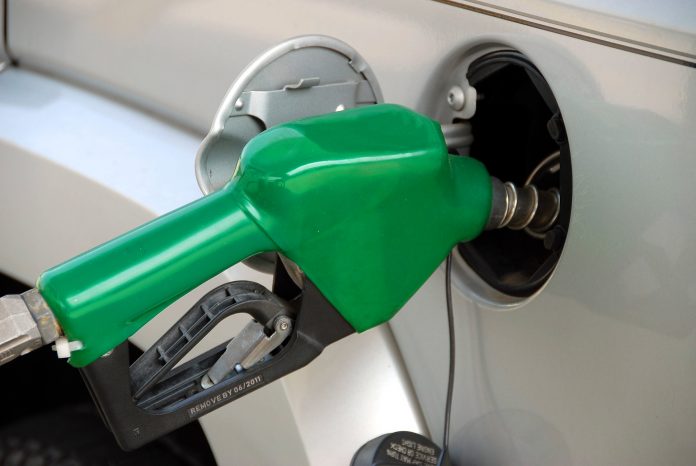By Robert Romano
President Joe Biden’s legislative agenda has sprung back to life amid consideration of Senate Democrats’ budget reconciliation bill for 2022 that will contain $369 billion of green subsides for solar, wind and electric vehicles, and another $25 billion of additional taxes on the fossil fuel industry, all in a bid to reduce carbon emissions by 40 percent by 2030.
The goal is to reduce carbon-based energy consumption and eventually, to bury carbon for good, even as sky-high energy inflation brought upon by artificial reductions in energy production of oil and gas during Covid that have still not fully recovered.
The rest of the inflation was similarly brought about by economic lockdowns, labor shortages and other production shortfalls that once demand recovered has driven prices quite high.
The truth is, it won’t get any better, any time soon unless we boost oil and gas production in the U.S. Biden’s budget will do the opposite, eliminating oil, coal and gas tax credits, resulting in an additional $25 billion of revenue over the next ten years, reports the Joint Committee on Taxation.
Additionally, the Environmental Defense Fund reports a breakdown of the $369 billion of green subsidies, including, “$250 billion for new refinancing and investment tools to reduce consumer electricity costs through reinvestment at existing and retired energy infrastructure sites,” a $27 billion green infrastructure bank, and “$40 billion in loan authority to help innovative energy technologies, like energy storage, battery and building efficiency technologies reach commercial deployment.”
Also, there is another $9 billion for consumer home rebates, $2 billion for newt transmission lines for solar and wind and $18 billion for Indian tribes energy development.
But there’s no money for new oil refineries, even though we desperately need them.
The bill will not complete the Keystone XL pipeline, even though it would boost North American oil output considerably.
The budget will not expand federal oil and gas leasing or subsidize it in any way, even as carbon-based energy shortages are strangling Europe’s economy and emboldening Russia, which just cut gas output to Europe via the Nordstream pipeline in half.
In fact, oil production in the U.S. is still below pre-Covid levels, and natural gas has only just caught up, the Energy Information Administration (EIA) reports. Coal production peaked in 2008 at 1.17 billion short tons, according to EIA. By 2020, it was down to 535 million short tons.
There is no provision to eliminate environmental, social and other non-fiduciary considerations in tax-free retirement investments, even though those subsidies are absolutely strangling the movement of capital into carbon that we desperate need.
The goal is to strangle the U.S. carbon energy industry, and it’s already working.
If for no other reason than the war in Ukraine, Biden’s green economic transformation should have been postponed, but sensing Congress is slipping through his grasp with the November midterms rapidly approaching — Republicans are favored to win back the House this year — he is proceeding apace with his anti-carbon agenda.
In the latest Economist-YouGov poll only 11 percent said climate change and the environment was their most important issue. 22 percent say inflation, and prices, and another 11 percent say the economy and jobs.
That might call into question just how sustainable Biden’s plan is politically, if it poses so many risks abroad and here at home. In that sense, this is all a huge gamble — that the public won’t overwhelmingly turn against this carbon energy starvation plan in 2022 — and again in 2024.
Originally published by the Daily Torch. Republished with permission.
Robert Romano is the Vice President of Public Policy at Americans for Limited Government Foundation and Americans for Limited Government.
For more on the Biden Administration’s hostility towards domestic oil and gas, click here.
For more on the Inflation Reduction Act, click here.



























Face it. The anti-fossil fuel agenda is steering us towards the “Hurt Locker.” Distorting market signals & misallocating resources on unreliable wind, solar & unproven battery technologies is NOT going to stabilize the electric grid or (ultimately) reduce energy costs or transform our transportation system as claimed. To me, that is the obvious part. Let me give you one other item to consider in the domestic oil & gas arena. Everyone is focused (primarily) on ESG, federal lease sales/permitting, Keystone XL as mentioned in the article. What no one is mentioning is the “Great Crew Change” taking place in the domestic oil & gas industry. Sure, bad policymaking in DC is unquestionably hindering domestic oil & gas output. What I question, moving forward, is the HUMAN CAPITAL in the industry to successfully “ramp up” production even if an “ALL of the Above” strategy is reemployed. The O & G industry, due to retirements, layoffs (since the 2014 downturn) and overall attrition has lost a TREMENDOUS amount of experience, technical & scientific knowledge. You don’t place floating platforms in 10,000 water depths in the Gulf of Mexico with 2nd year engineering grad students. You couple that “Brain Drain” with supply chain bottlenecks (pipe, frac sand, etc.) and lack of qualified young talent entering the profession due to the long & successful “vilification program” of the industry and you have all the needed ingredients for lack of capability to safely & responsibly expand domestic oil & gas production. I’m a bit cynical as a retired oil & gas (regulatory) professional. It took a long time to dig ourselves into the “hole” that has been created. It will take a while to dig us out…